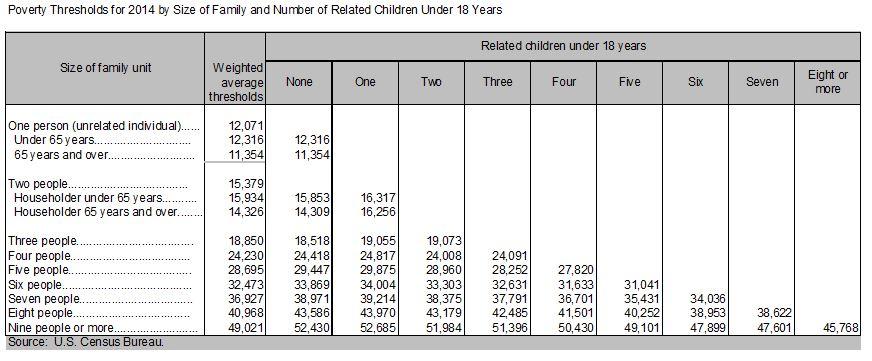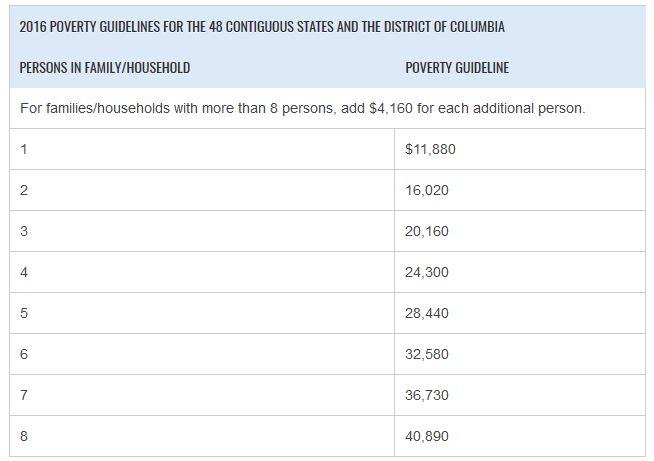There are two official measures of poverty issued annually by the federal government:
Both of the official poverty measures are intended to identify the level of income necessary to meet basic needs.
 The Census Bureau’s poverty thresholds are intended for
use as a statistical yardstick. The Bureau calculates
official poverty thresholds that vary by family size and
composition (family members’ age) using money income before taxes
not including capital gains or noncash benefits (such as public
housing, Medicaid, and food stamps).
The Census Bureau’s poverty thresholds are intended for
use as a statistical yardstick. The Bureau calculates
official poverty thresholds that vary by family size and
composition (family members’ age) using money income before taxes
not including capital gains or noncash benefits (such as public
housing, Medicaid, and food stamps).
If a family’s total income is less than the family’s threshold, then that family and every individual in it is considered in poverty. The official poverty thresholds are updated annually for inflation using Consumer Price Index (CPI-U).
Frequency and Timespan: Annual data for 1959 to the present
Geographic level of coverage: National; some regional data
Tables available online
Source:
U.S. Census Bureau. How the Census Bureau Measures Poverty.
(PDF) Accessed
2/13/2012
 The poverty guidelines are issued annually by the
Department of Health and Human Services. They are a
simplification of the official poverty thresholds calculated by
the Census Bureau and are intended for administrative purposes,
primarily determining financial eligibility for certain federal
assistance programs.
The poverty guidelines are issued annually by the
Department of Health and Human Services. They are a
simplification of the official poverty thresholds calculated by
the Census Bureau and are intended for administrative purposes,
primarily determining financial eligibility for certain federal
assistance programs.
Frequency and Timespan: Annual data, from 1959 to the present
Geographic level of coverage: one set of guidelines for the the 48 contiguous states; separate guidelines for Alaska, and Hawaii
Publications and Tables are available online
Source:
U.S. Dept. of Health and Human Services. Assistant Secretary for
Planning and Evaluation. Frequently Asked Questions Related
to Poverty Guidelines and Poverty. (PDF ) Accessed
2/13/2012
© Center for Poverty and Inequality Research
All Rights Reserved.
